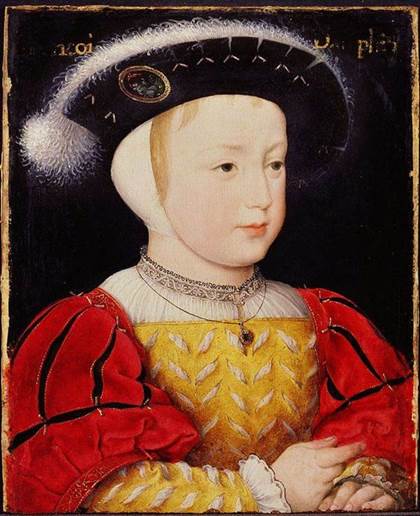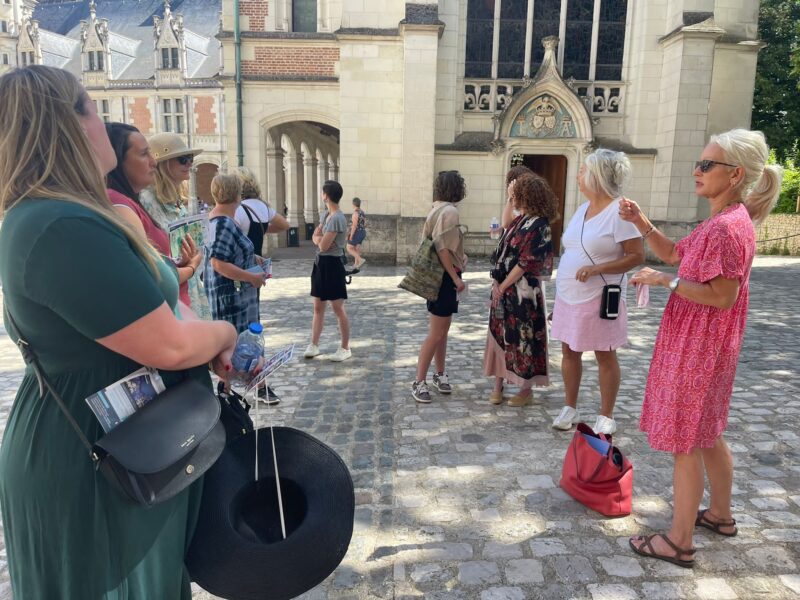
A Glimpse into the Lives of Children in the Late Middle Ages: From Peasants to Princes
by Christy Destremau
As Thursday of last week approached, it was time to head out of town for a weekend in Normandy, specifically Port-en-Bessin, to visit my daughter Chloé. Her six-month internship at a scientific research center along the Norman coast signals the home stretch of finishing her Master’s in Marine Biology from the Université de Marseille.
With a bag of story ideas to recount turning in my head, I once more loaded my belongings into the car, and my Sheltie Koa and I hit the road for our 6-hour drive. With ample time to reflect and choose a subject for this week’s blog post, Koa and I brainstormed, or well, I talked to Koa as she gave me an adorable “Are we soon there yet” stare. Initially, I considered that Normandy could be my subject with this year’s 80th anniversary of the D-Day landing. But I kept thinking about some of my recent research, which occupied my free time this winter. Often, we talk about the men and then the women of French history, but rarely about the children. So here we go, friends. Let’s talk about children and what childhood looked like across social classes from the late Middle Ages into the early Renaissance.
Step back in time with me to the late Middle Ages, a period of history characterized by feudalism, chivalry, and the burgeoning of Renaissance ideals. As we journey through this captivating era, we explore the vastly different experiences of children from various social classes. From the bustling streets of medieval villages to the opulent courts of France, the treatment and experiences of children varied greatly depending on their social class. Join me as we unravel the intricacies of childhood in the late Middle Ages and witness the evolving world of children as the French Renaissance dawned upon the horizon.

Treatment of Children Across Social Classes
In the late Middle Ages, the treatment of children varied significantly depending on their social standing. For peasant children, life was often marked by toil and hardship. From a young age, they would assist their families in tending to the fields, caring for livestock, and performing other essential tasks necessary for survival. Education was a luxury that few could afford, and many peasant children grew up without the opportunity to learn how to read or write. Many families lived the highs and lows of poverty and lived vagabond lives, moving from place to place daily. Depending on the child’s age, they traveled in makeshift backpacks on their parents’ or older siblings’ backs. Still, they were fed first when food was available. Abandoned children, however, lived an even harsher experience. They were taken in at specialty hospitals (think the early type of orphanage), but their life expectancy was low; nearly half died in infancy before the age of one due to brutal conditions, and those who survived infancy were subject to epidemics and disease because of the crowded communal living conditions. Towards the mid-fifteenth century, children of beggars were taken from their parents and placed into apprenticeships in an attempt to end the vicious circle of poverty. In the unspeakable practice, children, typically girls twelve to fourteen years of age, sometimes younger, were prostituted by a parent or neighbor in the name of survival.
On the other end of the spectrum, children of noble birth lived in a world of privilege and luxury, growing up in the splendor of castles and manors. Nurses and governesses often raised them, receiving a formal education in chivalry, etiquette, and courtly manners. For these children, playtime often involved games that imitated the gallant pursuits of their parents, such as mock jousting and archery. However, their lives were not without challenges, as they were expected to adhere to strict codes of conduct and honor. Their futures were often determined by strategic political alliances through arranged marriages as early as four years of age.
Childhood in the Late Middle Ages
Regardless of social class, childhood in the late Middle Ages was markedly different from what we know today. Children were viewed as miniature adults, expected to contribute to the family’s livelihood from an early age. While some children reveled in lavish feasts and extravagant celebrations, others faced the harsh realities of poverty, hard work, and abandonment. Playtime was limited, and the concept of a carefree, innocent childhood was virtually nonexistent. Instead, children were taught the skills necessary for survival. They were often thrust into the responsibilities of adulthood at a young age, as well as becoming victims of rape. The church played a significant role in shaping the lives of children, with education usually centered around religious teachings and moral values. Only at the beginning of the fourteenth century did we see the opening of one school per village, and nearly one hundred years later, in 1403, church officials ordered priests to require families to educate their children from the age of six or seven, both boys and girls alike. However, due to a lack of registration documentation, the number of children attending school is difficult to confirm. Still, thanks to fiscal and judicial records, it is believed that towards the end of the Middle Ages, more people knew how to read than thought.
Rules for Children at the French Court
 At the French court, the lives of noble children were governed by a complex set of rules and expectations. Etiquette and decorum were paramount, and young princes and princesses were carefully groomed to uphold the prestige and honor of their families. They were expected to excel in courtly pursuits such as dancing, music, and poetry. They were often thrust into the spotlight at lavish ceremonies and events, where they were scrutinized by the court and the public alike. As we transitioned into the French Renaissance period, the lives of children at the court underwent a transformation. With the Renaissance came a renewed appreciation for the arts, literature, and education. Children of nobility were encouraged to cultivate their talents, engage in scholarly pursuits, and partake in the burgeoning cultural movements of the time. The courts of France became vibrant hubs of learning and creativity, where young minds were nurtured and inspired.
At the French court, the lives of noble children were governed by a complex set of rules and expectations. Etiquette and decorum were paramount, and young princes and princesses were carefully groomed to uphold the prestige and honor of their families. They were expected to excel in courtly pursuits such as dancing, music, and poetry. They were often thrust into the spotlight at lavish ceremonies and events, where they were scrutinized by the court and the public alike. As we transitioned into the French Renaissance period, the lives of children at the court underwent a transformation. With the Renaissance came a renewed appreciation for the arts, literature, and education. Children of nobility were encouraged to cultivate their talents, engage in scholarly pursuits, and partake in the burgeoning cultural movements of the time. The courts of France became vibrant hubs of learning and creativity, where young minds were nurtured and inspired.
The Arrival of the French Renaissance
With the arrival of the French Renaissance, a gradual shift in the treatment and perception of children began to emerge. The Renaissance brought about a renewed interest in the arts, education, and humanism, leading to a growing emphasis on childhood as a distinct and formative stage of life. This period witnessed the rise of humanist scholars who advocated for the education and nurturing of children, laying the groundwork for the evolving concept of childhood that would come to define the ensuing centuries.
 As we reflect on the lives of children in the late Middle Ages and the dawn of the French Renaissance, we are reminded of the profound impact of history on the shaping of childhood. To truly immerse yourself in the rich tapestry of French history and culture, embark on a small group Loire Valley tour with France Off the Beaten Path Tours. Are you ready to step into the footsteps of the children of the late Middle Ages, where history and beauty converge to create an unforgettable journey?
As we reflect on the lives of children in the late Middle Ages and the dawn of the French Renaissance, we are reminded of the profound impact of history on the shaping of childhood. To truly immerse yourself in the rich tapestry of French history and culture, embark on a small group Loire Valley tour with France Off the Beaten Path Tours. Are you ready to step into the footsteps of the children of the late Middle Ages, where history and beauty converge to create an unforgettable journey?
- Check out our 2025 Schedule of Tours – Click Here to View 2025 Tour Dates
- Contact us at christy@traveloffthebeatenpath.com to request space availability and/or ask questions.
- Check out our LIMITED EDITION TOURS to Egypt, Champagne, and Normandy here!



